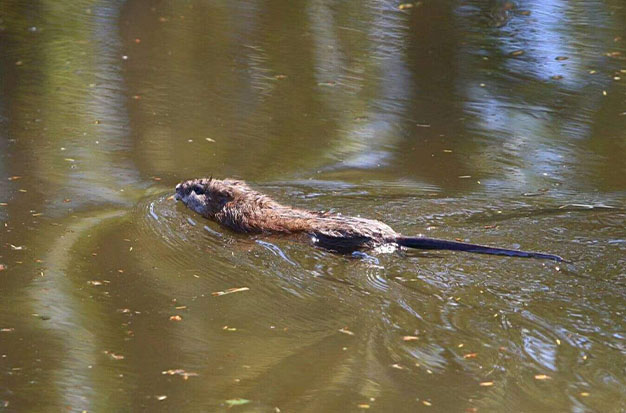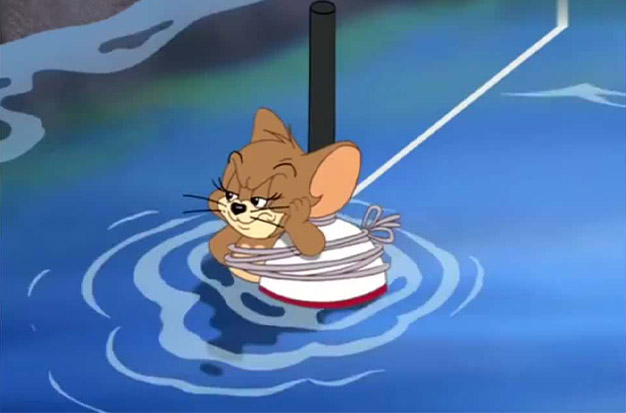Can Rats Swim? Everything You Need To Know
Can rats swim? The question of whether our pet rats are able to swim and whether or not our pet rats like to swim are two different things entirely.
A lot of people like to watch their animals swim. Videos of dogs diving into lakes or swimming next to rafts and boats can be found all over the internet.
Contrary to popular belief, we know that some breeds of cats also enjoy the occasional dip in the water. We also know that some dog breeds absolutely adore the water.
But is there any proof that our pet rats can swim? Additionally, if they can swim, do they like to do so? Let’s get going now!
Can Rats Really Swim?
Although rats are land mammals and prefer dry land, they are excellent swimmers and can hold their breath for almost three minutes while swimming underwater. Numerous species, such as Norway and roof rats, which learn to swim early in life, also enjoy swimming.
They have strong legs that help them tread water, so their bodies are well-suited for swimming. Their bodies are streamlined, which helps them move through the water more quickly. Rats also use their tails as buoyancy, and when they swim, their fur traps air, which increases their buoyancy and keeps them warm.
Some types of rats swim in the wild to elude predators and hunt for food. Rats can swim and tread water for up to three days, and they have been observed to swim more than a mile. Additionally, rats in urban and suburban areas can swim and are accustomed to swimming through sewers.
Rats Can Swim, But How Well?
Rats are actually quite good swimmers, despite their small size and predominately terrestrial lifestyle. Their streamlined bodies make it simpler for them to swim around in different environments that may have varying levels of water, while their strong legs assist them in pushing through the water.
Additionally, they have long, thin tails that they can use to easily float through the water. Their fur is also very dense, which acts as insulation from colder waters. Because of this, swimming is an essential aspect of rat life and aids in their ability to survive in various environments.
Do House Rats Enjoy Water?
The brown rat, also known as the Norway rat, likes to swim in its natural environment. Norway rats make excellent pets because they enjoy swimming. However, not all rats enjoy drinking it. Although all rats are capable swimmers, their preferences for swimming or land are determined by their species and personalities.
You should slowly acclimate your pet rat to a shallow body of water if you want to determine whether it enjoys swimming in the water. You can first fill a bowl with water and set it close to your rat. If it gets in the container or starts splashing around in the water, it will probably enjoy swimming.
In order to give your pet rat the best chance at learning to swim, gradually acclimate it to deeper bodies of water. Your pet rat might drown if you throw it into the deep end and it is unable to touch the bottom.

How Far Can Rats Swim?
The Volga, the second-longest river in Europe, is known to have been used by rats to travel to Russia. They can also swim across rivers that are similar in length.
Rats have been discovered more than a mile from water sources that were near their nests, proving that they are adept at swimming long distances without getting tired. They can swim up to a mile at a time and tread water for three days straight.
Long-distance swimming is a skill that rats have, and they will use it if it means preserving themselves.
Are Rats Able To Swim Up Your Toilet?
This could be the crucial query. Rats can swim up your toilet, but it doesn’t happen very often. You can see a curved pipe known as a trap if you look at the side of your toilet. This has a pocket of air that collects sewer gas and unpleasant odors. The rat has a place to pause and take a breath in this air pocket. Additionally, these pests’ collapsible rib cages enable them to fit through very small openings.
There are solutions if you worry that rats will climb your toilet. Keep the toilet lid closed initially. Although it won’t stop them from climbing the pipes, this will prevent rats from getting inside your house. Your toilet can also have a rat guard installed. On the sewer end of your toilet, there is a one-way valve that permits sewage and water to exit but prevents any entry.
Can Rats Swim In A Bathtub?
Rats like to swim, and if a pet rat enjoys swimming in a pan, sink, or bowl, then the likelihood is that they will also enjoy a swim in the bathtub.
The rodent seems to possess these abilities. These animals can even adapt themselves in the wild to swim in sewers, lakes, and small ponds, which is why humans like them as pets. This species is actually found in the wild, and people also keep them as pets. Rodents can therefore swim fairly well in a bathtub as well. Pets, however, are not used to swimming or being in the water. Pets should not be overworked or made to swim. If a pet does not enjoy swimming, he must have a simple exit. As long as they do it in a controlled manner, pets swimming in bathtubs is safe. Pets are aware that they possess innate abilities that will keep them safe. If a pet becomes accustomed to swimming in a bathtub, one can look forward to teaching them to swim in deeper water. As these are wild rats who eat anything and seem to enjoy it, some species of rats spend a lot of time in the water. But just as some people love the water and some people don’t, so can pets. It’s possible that some pets are different and will never want to swim, so it may take some time for them to get used to swimming in the water.
A Rat Swimming In The Ocean
When a rat in New Zealand swam 400 meters from the island of Motuhorapapa to the nearby Otata island in 2005, it accomplished exactly this.
It was discovered that the rat had a strong swimming ability after it was radio-tagged for tracking purposes. Rats’ propensity for swimming and their invasion of Pacific small islands are subjects of extensive research.
Some Other Facts About Rats
• A rat can fit through a hole that is only 1/2 inch wide. Rats can easily enter your property through that opening, which is about 1.3 cm.
• Horizontal wires are easily traversed by rats. Some individuals can even scale vertical wires.
• Rats can climb up vertical pipes that are only 1.5″ (3.8 cm) in diameter. This indicates that a rat could easily get into our house through the drains and pipes.
• Vertical pipes with a diameter of 7.6 cm, or 3 inches, can sometimes be climbed by some rats.
• A rat can easily climb up your plumbing or electrical pipes and wires if they are within 3″ or 7.6 cm of the walls of your home.
• Rats need to gnaw on hard objects to keep their front teeth down because they are constantly growing. They will attack a wide range of materials, including glass and wood. And a rat bite will undoubtedly be very painful if you ever get one.
Overall, a rat’s abilities are quite amazing. But even with these super rat skills, we can still solve your rat control issue. Do you have a rat problem in your London residence or place of business? To learn more about how we can assist you, please visit our contact page.
